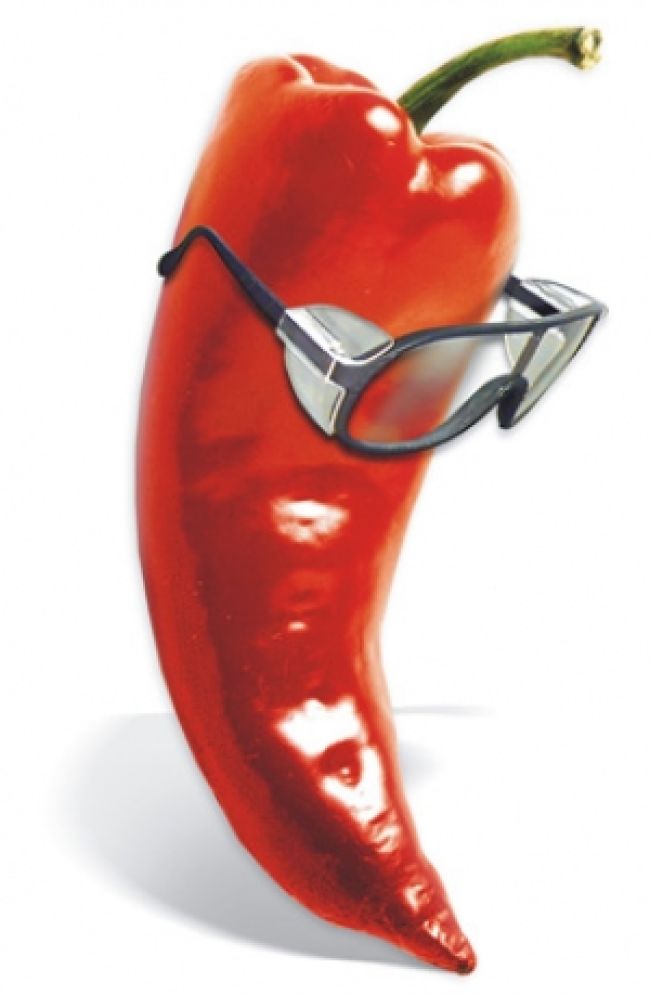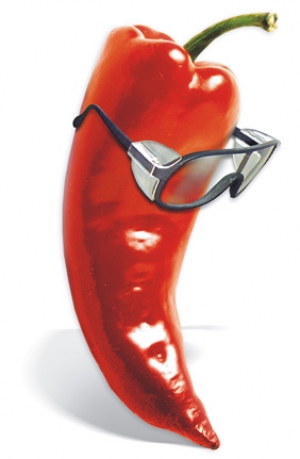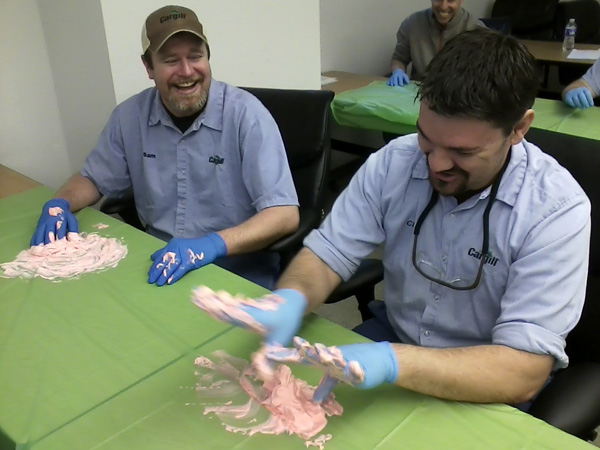
Spice It Up!

Would you go to a fine restaurant that only served bland food? Of course you wouldn’t. One of the main reasons we enjoy going to restaurants is because the food is seasoned and tasty. The same applies to safety presentations. People enjoy them if they are pleasing to the senses. That’s why spicing them up so they aren’t bland will not only make your presentations more enjoyable, but will help stimulate your employees to get involved. I’ve seen it happen hundreds of times.
Your goal for any safety presentation is to change or reinforce behaviors. To do this, you’ve got to get and keep your audience’s attention. Following are a variety of tips and techniques guaranteed to do just that.
Arouse Your Audience’s Curiosity from the Get-Go
Inquiry arousal is one of my favorite tactics to get an audience to wonder about what’s going to happen during our time together. Here’s an example: When I give my “Spice It Up!” presentation, I place a life-size plastic cockroach on each audience member’s chair. Though I get a wide range of responses, one thing’s for sure – everyone at some point is wondering what that cockroach is all about.
I start the presentation by asking someone who was a bit repulsed by the cockroach when they first saw it, “How much would I have to pay you to eat a live cockroach?” That leads to a fun discussion about our dislike of cockroaches. Then I explain that we’ll be killing a lot of “safety presentation cockroaches” today – things that take place during safety meetings and training that people don’t like. It’s a great metaphor, it gets the audience’s attention and it’s memorable.
You can easily do the same thing. Place a small object like a bolt, balloon or playing card in front of everyone and logically tie it into your subject. The objects that work best are the ones whose meaning your audience won’t be able to figure out until you tell them.
Involve Everyone
“Talking heads” are what movie producers call those characters who sit or stand and talk for long periods of time. Now here you are, planning to stand in front of an audience who has probably heard you before, perhaps many times before, and you’re going to talk, talk, talk for half an hour or more. Good luck.
A better option is to do things to get everyone involved. One exercise I’ve successfully used many times starts with the presenter passing out index cards, then asking everyone to answer this question – or another question that relates to your presentation topic – on one side of the card: What do you think causes most accidents? On the other side of the card, ask audience members to put the word “Me” at the top and then write below it what they feel are the reasons why they have gotten into accidents in the past. As people finish, collect their cards. You’ll want to breeze over the answers as you collect them. You never know what a witty participant will put on a card; it may be something you can use to get everyone laughing. On the other hand, it may be something you don’t want to accidentally say out loud.
No doubt, almost all the cards will blame some type of human behavior or emotion as a culprit. Read many aloud. Now you’ve created a smooth path into a discussion about how to correct these behaviors. More importantly, you got your audience involved.
Use Props
I love props – they’re great. Start using them more. Sure, you can go overboard and become the Carrot Top of safety, but overall, props are an easy way to gain and keep your audience’s attention.
One reason props are so wonderful is because they are everywhere. Any object can serve as a prop. I’ve used paper bags, shoelaces, dirt, broken extension cords, eggs, serving spoons, a sponge and hundreds of other common items to liven up my sessions.
However, props with the most impact are ones that get your audience to do something that helps them understand or practice a safe behavior. Since 1999 I’ve published Safety Stuff, an e-zine that includes ideas from safety leaders around the world about how they spice up their safety meetings.
The best and most popular ideas I get are the ones that include audience participation props, like the one I got from Erin R. Denker, who used shaving cream mixed with red food coloring as a prop to simulate blood for a blood-borne pathogen PPE class. You can see from the picture below that the attendees were having loads of fun while practicing how to take off their gloves without getting any “blood” on their hands.

Use Unusual Examples to Make a Point
If you’ve ever taken any courses to improve your memory, you probably learned how to hook the thing you’re trying to remember to another not-so-obviously-connected item.
Unusual examples are remembered better than mundane ones. I once used a hard-boiled egg as a comparison to the protein in your brain. I explained how heat stroke can literally cook the protein in your brain the same way the white of an egg is cooked. That type of unusual example sticks with a person.
Get Personal
Talk about your audience a lot. Talk about their children, their hobbies, their likes and dislikes. Don’t say anything negative, of course, but when you tie in your topic with things that your audience is close to, they will sit up and pay attention. If there are employees sitting in the room who are avid fishermen, tie in fishing with your safety topic. Do it logically, but do get personal.
Loosen Up and Look for Laughs
Do you ever have problems getting your audience to settle down? If you do, I want to know why you want them to settle down. The best audiences are full of vim and vigor. Don’t try to settle them down; instead, try to get them to change the focus of their energy to the topic of the meeting.
There are an infinite number of ways you can have a blast with your audience. They’ll behave, if your definition of behave is similar to mine: doing what I want them to do that will make the safety session fun, memorable and effective.
You should include fun, drama, fear, sadness, logic, laughter, ideas of pain, and every other human emotion and technique that will help your audience say, “Yes, I understand and plan to work even more safely from now on.” This means you must …
Take Chances
Blasphemy! Take chances?!? We’re talking about safety here. How dare you say we should take chances! Yes, when it comes to working and living, taking chances is not what we’re promoting as safety leaders. But when it comes to influencing the human mind, you’ve got to stretch and try new things. If you know your subject well, are respected as an expert, and want to stand out as someone dedicated enough to his or her profession to be innovative, you must take chances.
I took a big chance last year and it worked out wonderfully. While giving a keynote speech at the National Safety Council’s annual conference, I used a poem I wrote to a respirator – “Ode to a Face Pump” – as part of a competition. Three volunteers from the audience came on stage and recited a stanza from the ode to a real respirator. Yes, it sounds corny and it could have been a flop, but it wasn’t. Not only did I get the entire audience involved – they rated each volunteer by cheering – it turned out to be the highlight of the speech.
So don’t be afraid to experiment. Try new ways to spice up your safety presentations. It’s worth the effort because your audience will enjoy the experience and you’ll be delighted at how grand your presentations turn out.
About the Author: Richard Hawk helps companies around the world create more vibrant safety cultures by showing them how to make safety fun. As a professional speaker, author and musician, he also inspires employees to focus better and enlightens safety leaders about ways to increase their influence. Before starting his own business in 1991, Hawk spent several years as a safety professional in the nuclear industry. To learn more and to subscribe to the Safety Stuff e-zine, check out www.makesafetyfun.com.

